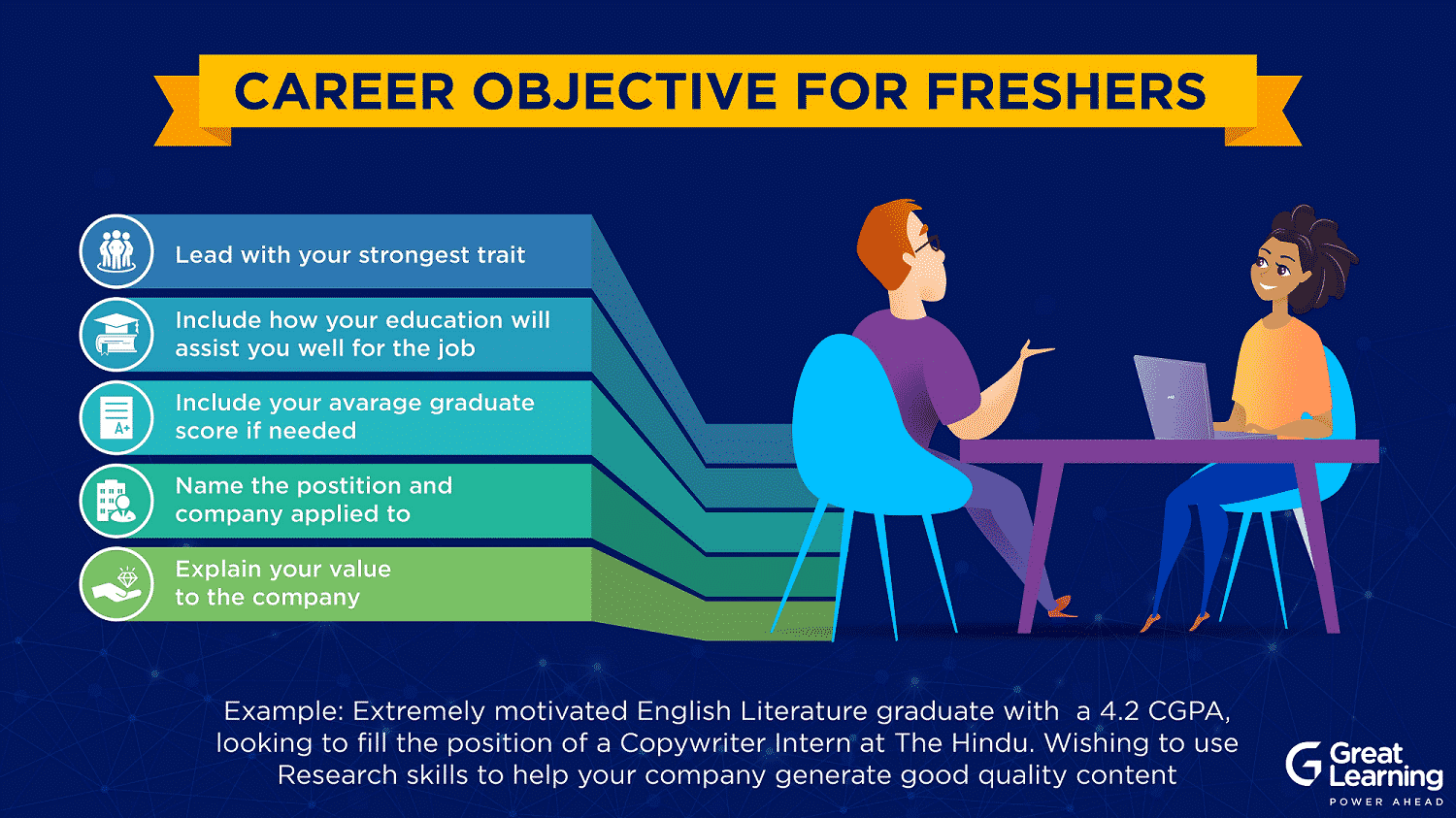What is Upskilling
Upskill is the process of an employee or an individual learning a new skill. As individuals it is important that we learn and unlearn new skills regularly to stay up to date with emerging trends.
Reasons to Upskill
There are new advancements in existing technologies that demand that professionals be aware of all the changes, and some technologies are completely changing the nature of certain professions. To put that in context, the World Economic Forum estimates that 65% of children entering primary school now will be working in jobs that do not currently exist.
Each working professional is now aware that they need to be constantly learning in order to stay relevant in the work-force and secure their future careers. But what they choose to learn is also very important. Nobody wants to be stuck with a pager when the entire world uses cell phones. This also applies to freshers and early-career professionals, who need to build the right skills so that they don’t waste time working in domains that may soon become obsolete.
At Great Learning, we’ve seen over 10,000 learners who have transitioned to rewarding careers in domains that we are sure would build the future. We’ve specifically chosen to design programs in these domains, after extensive research on long-term growth prospects and employment opportunities that will be made available in the future.
Upskill Courses in 2024
Artificial Intelligence and Machine Learning

The World Economic Forum has estimated that 75 million jobs will be displaced by AI by 2024. But it’s also going to add 133 million jobs in the same time frame. That’s a net gain of 58 million jobs that will be available for qualified professionals.
In addition to the availability of jobs, there’s a massive shortage of AI professionals in India, because 76% of companies say they have trouble implementing AI due to lack of qualified employees , this huge demand is combined with AI influencing every other domain, it’s an obvious choice for anyone wanting to work with a technology of the future.
Great Learning offers 3 programs in this domain:
- PGP-Artificial Intelligence & Machine Learning – A 12-month comprehensive program that will make you an AI expert.
- PGP-Machine Learning – A 7-month program that covers Machine Learning exhaustively with some context about Artificial Intelligence.
- Deep Learning Certificate Program – A 3-month certificate program for professionals with experience in AI and ML, to gain an in-depth understanding of Deep Learning.
Business Analytics and Data Science

No business in the present market place can afford to ignore Analytics right now, because they need data-driven decision making to improve their outcomes. Data Analytics is also now ubiquitous because even domains that seemed impervious to data analytics are now adopting them, such as law, defence, HR, in addition to the increased adoption by analytics-driven industries such as finance, logistics, internet companies and so on.
This domain also suffers from a similar problem of a lack of qualified professionals, leading to over 97,000 jobs being vacant in India. which can be filled after taking one of these programs:
Great Learning offers 3 programs in this domain:
- PGP-Data Science & Analytics – This 12-month program requires no prior technical expertise and teaches you all you need to know about Business Analytics in an industry context. This program is better suited for professionals with a few years of experience.
- PGP-Data Science with Gen AI – This is a program aimed at fresh graduates and early-career professionals to help them launch their careers. This is a full-time program that offers immersive learning in a classroom format.
- Data Science & Analytics Certificate Program – This is a certificate program that’s aimed at beginners to learn the basics of Business Analytics. Since this is an online program, learners will have a flexible learning experience.
Cloud Computing

Cloud Computing forms the backbone of data delivery and management, as it offers great flexibility and cost-effectiveness to organisations. Cloud computing has grown over the past decade to make data accessible to everyone, and the future of cloud computing hinges on remotely delivering hardware capabilities.
Cloud computing has already phased out CDs, DVDs, Hard Drives and pen drives as the preferred mode of storage, and they’re only getting started. This bodes well for people looking to get into cloud computing to further their careers, because India is poised to see over 1 million cloud jobs by 2024, according to IDC.
Great Learning offers 2 programs in this domain:
- Cloud Computing Program – This is a 6-month online program that will teach you to become a cloud architect. The program comes with an optional Developer track certificate offered to professionals with prior programming experience. Learners can choose to build expertise in AWS, Google Cloud or Azure.
- Devops Certificate Program – This DevOps program teaches professionals the practice of building and deploying systems in the cloud. At the end of this online program, learns will become competent DevOps engineers.
Cybersecurity

As more systems move online, there’s a larger requirement for keeping all information and services safe and secure. Critical operations such as banking, defence all have cutting-edge security systems, and the same degree of security is trickling down to other domains as well.
In the light of recent privacy concerns, every organisation that holds any data are looking keenly to improve their security measures. This gives rise to an opportunity for professionals to upskill in cybersecurity and launch their careers. The Asia-Pacific region alone has a shortage of 2.14 million cyber security professionals.
Great Learning offers a program in this domain:
Stanford Advanced Cyber Security Course– This 6-month online program is a program by the Stanford Centre for Professional Development, delivered by Great Learning. It features course content and online videos from Stanford faculty and helps learners transition to a career in cybersecurity.
Full Stack Development

As more companies look to increase their software capabilities, Full Stack Developers and in demand because they can look at a system holistically and troubleshoot any errors that may arise. Since they are familiar with both the front-end and the back-end they’re well-suited to participate in the end-to-end process of building and managing applications. Reports have estimated a 20% growth in jobs making it an in-demand job profile in India
Great Learning offers a program in this domain:
Advanced Software Engineering – This online program teaches all aspects of Full Stack Development and is perfectly suited for early career professionals with at least 1 year of experience, who are looking to gain relevant skills set that will set them up for career success.
Digital Marketing

With increased online digital ad spending by almost all companies, the digital marketing space has seen explosive growth over the past decade. Every company needs to maintain a digital presence, which increases the demand for Digital Marketing professionals. Digital Marketing has ample growth opportunities in a wide variety of skills such as Email marketing, Social Media Management, Content Marketing, SEO/SEM.
Also, if you want to learn SEO then, Enroll in this Free SEO Course from Great Learning
Great Learning offers a program in this domain:
PGP – Strategic Digital Marketing – This 5-month online program covers a wide range of Digital Marketing skills, and helps learners become a well-rounded Digital Marketing professional.
The skills and domains described on this page are without a doubt the technologies that will build our future and dictate the course of human progress. Depending on your experience, and of these skills will definitely set you up for career success, provided you put in the work to learn concepts and apply them to real-world problems.
All the programs that listed here use real-world projects to instil the theory you’ve learnt. They also have industry experts who will give you useful insights into how you can apply what you’ve learnt to solve real-world problems.
Why is upskilling key for the future of work?
Over the past years, Upskilling has become progressively applicable. There are multiple reasons for this but the most important one is the growing (digital) skills gap that many companies are facing; the contrast between what employers want or what they need their employees to be able to do and what the employees can actually do. The main reasons of the current skills gap are:
- Skills gap due to an aging workforce. Retirement of old workers creates a gap, both in terms of openings that are hard to fill, and in terms of skills and knowledge that get lost in the process.
- Skills gap due to digitalization. The difference between supply and demand for technical experience is known as the digital skill gap. Developments in fields like artificial intelligence, robotics, and other technologies are taking over rapidly, hence changing the nature of the jobs by extension and the skills needed to do those jobs is a wise choice.
Benefits of upskilling
There’s no doubt that the economy is evolving at a rapid pace. As a result, the rate of technological progress continues to accelerate, and the demands placed on workers in today’s globalized society continue to rise. Despite this, economic growth has slowed.
Keeping up with the rapid speed of technological progress is a difficult task for businesses of all sizes. While technology generates great economic opportunities, it also creates skills gaps, especially in industries such as manufacturing, healthcare, and construction, where skilled personnel are in high demand.
How can businesses bridge the skills gap while keeping their present employees? In this increasingly technology-driven world, a company’s ability to upskill, or its capacity for training and developing its personnel to extend their skill sets, generates a huge competitive edge.
Why Is It So Important to Upskill in Today’s Workforce?
The skills gap is so acute that according to Gartner, 58 per cent of employees require new abilities to accomplish their jobs properly. Upskilling, or the process of broadening an employee’s skill set (usually by adding to an existing body of knowledge), is a critical answer to this problem.
It’s also a global problem. A report from the World Economic Forum (WEF) recently detailed the economic importance of upskilling. It claims that now is a critical time for businesses to embark on an “upskilling revolution” that will allow employees around the world to immerse themselves in the future of work, whatever that may involve.
That potential has enormous financial ramifications. According to the WEF, a coordinated effort to offer the upskilling people require would boost the economy by trillions of dollars, with companies who act quickly to upskill their workforce and stay ahead of the competition getting a piece of the pie.
Needs of upskilling
Employee turnover is costly, as we all know. The cost of replacing a single employee, according to Gallup, can range from half to two times the employee’s annual salary—and that’s a modest estimate. This suggests that a 100-person company with an average salary of $50,000 may have annual turnover and replacement expenses of $660,000 to $2.6 million.
Upskilling, also known as reskilling, is a less expensive option than hiring and training a new employee. You develop a better-rounded, cross-trained workforce and boost the effectiveness of your team by reskilling your staff.
Besides this, there are many benefits of upskilling an organization.
- Retention is improved. No one wants to work for a firm that does not invest enough in the advancement of its personnel. Upskilling guarantees that employees’ abilities do not become obsolete, as well as demonstrating to them that you care about their careers and prospects. Fixing schedules to allow them to focus on acquiring new skills through executive coaching will not only enhance their current performance but also prepare them for future challenges. This commitment to their professional growth fosters a sense of loyalty and belonging, making them more likely to stay with the company long-term.
- Morale is boosted. Employees who have possibilities for training and development are more satisfied in their jobs and have a more positive outlook on their future with the organization. Reskilling your employees allows them to see the route to promotion in front of them and gets them excited about what’s next. It gives them a greater feeling of purpose to know they’re working toward something that will improve their lives.
- Customer satisfaction is improved. Customers are happier when their personnel are happy. Workers perform better work when they are satisfied with their employer and believe in the goals they are pursuing. Additionally, upskilling keep your employees informed about industry developments, allowing them to provide the finest advice and insights to clients and prospects. Clients are willing to pay a higher fee to work with a staff that is more knowledgeable and aggressive. When clients are satisfied with your job, they become stronger brand champions.
- Attracts new talent to the company. According to SHRM’s skills gap data, 83 per cent of HR professionals are having trouble recruiting, and 75 per cent of those HR professionals believe there is a skills shortage among candidates for job positions. Of course, as your organization grows, you’ll likely require new talent to supplement your experienced, upskilled employees. Employees become stronger brand advocates when they feel a sense of purpose with their firm and their clients are pleased with their work. That implies they’re more inclined to tell their friends, former coworkers, and family members about your company. When it comes time to increase your team, you suddenly have a large pool of diverse talent to pick from.
Employee Upskilling Strategies for Your Company
While the work may appear intimidating, with careful preparation and targeted investments, your team may be performing at its best in a surprising amount of time. An effective upskilling program requires a diversified strategy. Here are six methods for upskilling your workforce.
- Prioritize your skills and areas of focus.
While most employees can benefit from upskilling, organizations will get the best results if they prioritize areas and skills based on their company’s goals and vision. For example, a company could want to make sure that its logistics staff is up to speed on industry software, or that its sales and marketing departments are making the most of social media.
- Incorporate upskilling into employee development and performance plans.
Company and team leaders can emphasize how upskilling can enhance employees’ careers to get their team or the entire organization on board with the notion. Achieving particular skills, for example, could be incorporated into an employee’s annual goals or linked to a future promotion. Company executives must also recognize and prioritize the time required for upskilling and, if necessary, reduce employees’ schedules to allow them to focus on acquiring new skills.
- Enroll employees in training programs or courses.
There is no alternative for formal training when it comes to certain skills. Companies can use online courses created for professionals to get their staff up to speed on machine learning or to prepare them for new leadership positions. Emeritus features a number of programs that have been developed in partnership with renowned universities. The majority of them are designed to fit into a professional’s busy schedule, and many of them offer the chance to work on specific company initiatives.
- Make use of both internal and external experts
Organizations frequently have some employees with a specific skill set, but not enough. Companies might encourage experienced employees to take on the role of mentor or even trainer in this case. Companies may combine an employee who already possesses a certain ability with one who aspires to acquire it for one-on-one tutoring, depending on the skills in question.
They might also support more comprehensive learning opportunities, ranging from one-time speeches to multi-week training sessions, from skilled staff.
Are there no internal experts? Many businesses find that bringing in external trainers that specialize in a specific field for group coaching sessions on specific tools or abilities helps them succeed.
- Provide employees with challenging assignments.
Stretch opportunities, or assignments that are outside of an employee’s current scope of knowledge and job description, allow employees to grow on the job while demonstrating their aptitude to take on new challenges. In a stretch assignment, an individual contributor can be granted leadership of a project team, or an employee might be assigned to a new project job (such as analyzing data or creating a marketing strategy). Stretch assignments, of course, can only be successful if employees are given the assistance and resources they need to learn new skills and meet the challenge.
- Keep track of progress and reward it
Measuring outcomes, like any other business investment, is critical for iteration and improvement. Tracking what works and what doesn’t helps employees improve and learn new skills, as well as other managers who are looking for ways to upskill their employees. While strategies will differ depending on the skill, you could ask the employee to complete an evaluation or test project or to write a report on what they’ve learned. Further, you can reward employees for their efforts to improve their skills. To emphasize the value of training and growth, provide an incentive for them to complete it. Positive reinforcement also leads to a happier and more productive workforce.
7 Ways to upskill your workforce
The different ways to upskill your workforce depending on your organization’s needs are as mentioned below –
- Learning and Development –
Upskilling your workforce by way of a Learning and Development (L&D) program is probably the most obvious way to go.Depending on the model you use, there are four phases required:
- An analysis of training requirements
- Description of learning objectives
- Design of training content and method
- Monitoring and evaluation
Every organization will end up with a slightly different L&D strategy program. Basically, this means that the learning methods a company chooses to upskill its workforce will vary as well. Some organizations will prefer online courses combined with real-life lectures and seminars, while others will go for peer coaching and an ‘upskill track’ on their LMS (Learning Management System).
2. Job rotation –
Job rotation is the practice of rotating employees between jobs in an organization. It can be an outstanding way to transfer certain skills, knowledge, and competencies. These rotations are mostly lateral, this suggests that this happens between jobs on the same level.
For example, managers are required to gain experience in different departments before they’re ready for a senior leadership position. Similarly, HR professionals sometimes lack business skills. A better way to build these skills is by rotating them beyond the HR department.
3. Job enlargement –
Job enlargement demands to include additional activities within the same level to an existing role. In simple words, it means that an employee will do more or different activities in their current job.
Job enlargement educates people with a variety of skills and helps them to grow more in their career. Additional job responsibilities require training. In other words, it can be a path to upskill your workforce.
4. Job enrichment –
Job enrichment is a process that is identified by building extra dimensions to the existing job. Examples like adding up your skills, creating more autonomy, and giving feedback.
While the foremost goal of job enrichment is to make jobs more motivating, it can have the ‘bonus’ advantage by upskilling people at the same time.
5. Peer coaching –
Peer coaching is another way to upskill employees. Two or more employees work together to expand, refine, and build new skills, educate and help each other, and solve problems in the workplace.
Peer coaching exposes employees to a wider range of workplace skills. The interesting fact about this kind of upskilling is that it has a more informal side, which means people have a peer they can talk to directly, ask questions and learn from by admiring them.
6. Peer mentoring –
Peer mentoring is when an experienced employee transfers knowledge and skills to a less experienced employee.
Peer mentoring can be a beneficial way of upskilling. Most of the knowledge of employees comes from their personal experience and interactions with colleagues. This kind of implied knowledge is hard to transfer.
7. Hire external experts/specialists –
Sometimes, you need to upskill people but you don’t have the right man power to do so. Either because you need employees with certain skills as early as possible and training them would take a long time. Or perhaps because the skills needed are new to you, resulting in lack of knowledge and experience to start upskilling people.
A solution to this might be to hire freelance specialists or experts. These people can deliver the required skills, competencies, and experience you need to kick start a new project. By combining these external experts with the right group of employees within the company, you can create an upskilling opportunity.











